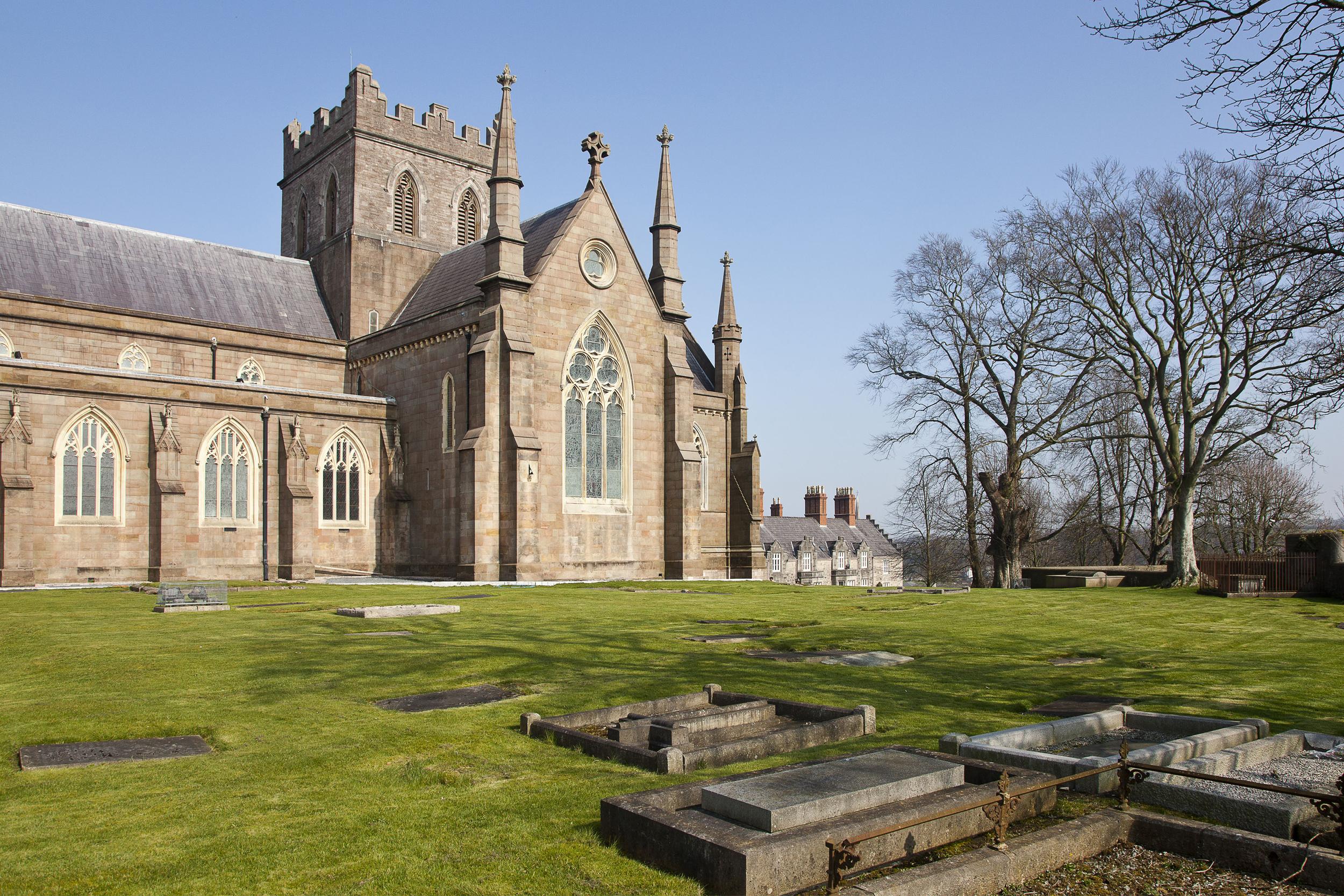St Padrig
Llanbadrig, Anglesey
Mae eglwys St Padrig yn sefyll yn un o olygfeydd prydferthaf Ynys Môn; mae’n fangre i fyfyrio, lle mae tangnefedd yn teyrnasu.

As the seat of both Catholic and Anglican Archbishops, Amargh is still the Ecclesiastical Capital of Ireland, the Anglican medieval church has been sympathetically restored over centuries and celebrates its connection with St Patrick.
Armagh, County Armagh
The origins of the cathedral are related to the construction in 445 of a stone church on the Druim Saileach (Willow Ridge) hill by St Patrick, around which a monastic community developed. The church was historically the centre of the Roman Catholic Church in Ireland, having been transferred to the Protestant Church of Ireland by the British government during the Irish Reformation. Following the Henrician Reformation in Ireland the cathedral became increasingly associated with the then established church and has been definitively in Anglican hands since the reign of Elizabeth I. A Roman Catholic cathedral was built on a neighbouring hill in the 19th century. Cordial relations exist between both cathedrals.
The church itself has been destroyed and rebuilt 17 times. The edifice was renovated and restored under Dean Eoghan McCawell (1505-1549) at the start of the sixteenth century having suffered from a devastating fire in 1511 and being in poor shape. Soon after his death the cathedral was described by Lord Chancellor Cusack as ‘one of the fairest and best churches in Ireland’.
Again it was substantially restored between 1834 and 1840. The fabric remains that of the medieval buildings but much restored. While Cottingham was heavy handed in his restoration, the researches of TGF Patterson and Janet Myles in the late 20th century have shown the restoration to have been notably antiquarian for its time. The tracery of the nave windows in particular are careful restorations as is the copy of the font. The capital decoration of the two western most pillars of the nave are medieval as are the bulk of the external gargoyle carvings of the parapet of the eastern arm. Subsequent restorations have more radically altered the internal proportions of the medieval building, proportions which Cottingham had retained. Many other Celtic and medieval carvings are to be seen within the cathedral which is also rich in 18th and 19th century sculpture.
Llanbadrig, Anglesey
Mae eglwys St Padrig yn sefyll yn un o olygfeydd prydferthaf Ynys Môn; mae’n fangre i fyfyrio, lle mae tangnefedd yn teyrnasu.
Llanfigael, Anglesey
Mae’r eglwys hon yn edrych fel ysgubor o’r tu allan, ond unwaith y mentrwch y tu mewn, fe welwch ei bod yn uned gyflawn sy’n deillio o’r cyfnod Sioraidd diweddar.
Llantrisant, Anglesey
Dim ond ar droed bellach y gellir cyrraedd hen eglwys Llantrisant.